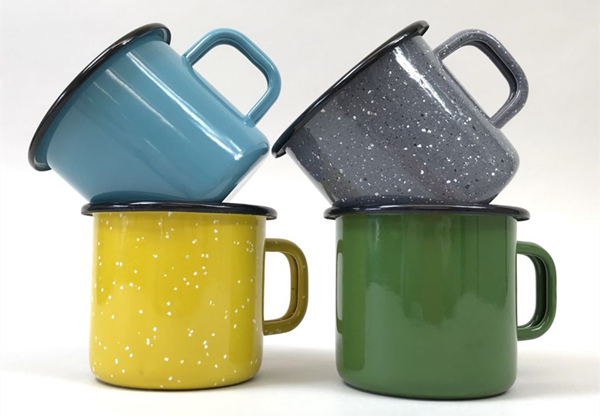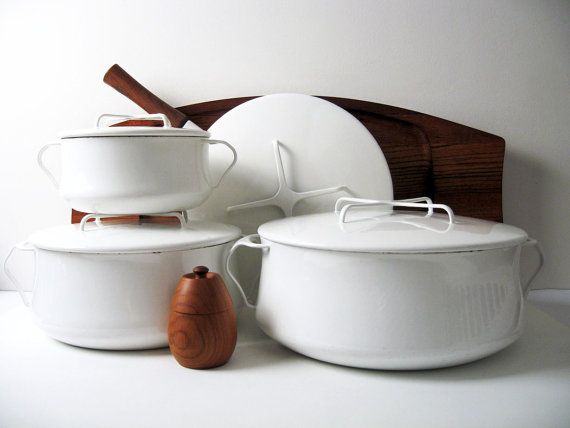Is Porcelain Enamel Safe to Use?
Vitreous enamel is an inorganic, glassy coating fused at high temperatures to form a mechanical and chemical bond with a metal substrate. It has many useful properties: it is smooth, hard, chemically resistant, durable, scratch resistant (5–6 on the Mohs scale), has long-lasting colour fastness, is easy to clean, and cannot burn.
With the continuous development of enamel technology, enamelware can be seen everywhere in daily life, such as enamel mug, cookware, BBQ, Bathtub, water heater, Oven, signs and etc. But some people still have concerns, is porcelain enamel safe to use? If drink water with enamel mug, would get heavy metal poisoning?
Is porcelain enamel itself toxic?
The first thing to acknowledge is that heavy metals may be present in the raw materials of enamel coatings, but there is no need to worry when considering the dose and risk of heavy metal dissolution.
The enamel frits are mainly made of minerals that are safe for human health, including quartz (silica), feldspar (silicates of alkali or alkaline earth metals, commonly potash feldspar), and clay (aqueous aluminosilicate).Other chemical materials may contain heavy metals, such as copper, manganese, nickel, etc., to improve the performance of the ground coat / cover coat enamel frits or to adjust the color of the enamel (pigments).
It should be clarified that, as an auxiliary material, the heavy metal content mentioned here is actually very low, and the dissolution rate is even lower. In the enamel firing process, trace amounts of heavy metals are almost firmly locked up in the bulk of the harmless material.

Is it toxic when heating enamel cookware or use enamelware to hold coffee or orange juice?
Don't have to worry about toxicity by using qualified enamel products for your food and drink, or by cooking a normal meal.
There have been some studies that heavy metals will be dissolved out of the standard limit when enamel products are heated with acetic acid and ethanol for a long time (more than 2 hours), and this phenomenon will be more obvious under acidic conditions (4% acetic acid)
However, the above set conditions actually belong to a relatively extreme environment, and our actual use in life will not achieve such extreme conditions.
Formal enamelware manufacturers produce products that need to undergo rigorous testing to ensure that risks are kept at a very low level. As an ordinary consumer, choose the qualified enamelware that accords with national standard, need not worry.

If the enamelware is broken, can't it be used?
There are also concerns that the enamel coating, even though it poses no safety risk, is said to break exposing the metal inside, posing a health risk.
That's right! If the enamel product is broken, don't use it again.
Vitreous enamel is really just a coating similar to glass, it is wrapped around the metal embryo, used to enhance the resistance of metal products to acid and alkali corrosion and oxidation.
We can think of it as an "enamel coat" for a metal coat that rusts easily. If the enamel falls off, the metal inside loses the protection of the enamel coating, and the metal becomes vulnerable to corrosion and oxidation again. Moreover, the cracked glaze will expose the internal porcelain base material, and the contact area with food will be greatly increased, increasing the risk of harmful substances dissolving out.
Precautions to be taken when using enamelware
1. Please add water, oil and other liquids before heating. Please do not empty the enamel cookware.
2 . The first use of unused enamel pots and bowls, please do not burn with high temperature and fire immediately, or it will damage the enamel layer.
3. After used at high temperature, do not immediately pour cold water on the enamelware, it will make the enamel layer crack, reduce the service life.
4. Do not dry the soup in use, it will damage the enamel layer.
5. Don't throw it heavily to avoid losing the porcelain layer.
6. No microwave.
Related Searches:
Porcelain enamel
Porcelain enamel coating
Porcelain enamel finish
Porcelain enamelware
Porcelain enamel frit
Porcelain enamel glaze
Porcelain enamel paint
Porcelain enamel restoration
Porcelain enamel durability
Porcelain enamel resistance
Porcelain enamel surface
Porcelain enamel application
Porcelain enamel manufacturing
Porcelain enamel technology
Porcelain enamel techniques
Porcelain enamel properties
Porcelain enamel products
Porcelain enamel advantages
Porcelain enamel disadvantages
Porcelain enamel colors
Porcelain enamel decoration
Porcelain enamel safety
Porcelain enamel cookware
Porcelain enamel signs
Porcelain enamel panels
Porcelain enamel finishes
Porcelain enamel substrates
Porcelain enamel process
Porcelain enamel equipment
Porcelain enamel quality
Porcelain enamel testing
Porcelain enamel industries
Porcelain enamel applications
Porcelain enamel temperature
Porcelain enamel layers
Porcelain enamel bonding
Porcelain enamel thickness
Porcelain enamel adhesion
Porcelain enamel cleaning
Porcelain enamel maintenance
Porcelain enamel repairs
Porcelain enamel innovations
Porcelain enamel history
Porcelain enamel crafts
Porcelain enamel materials
Porcelain enamel techniques